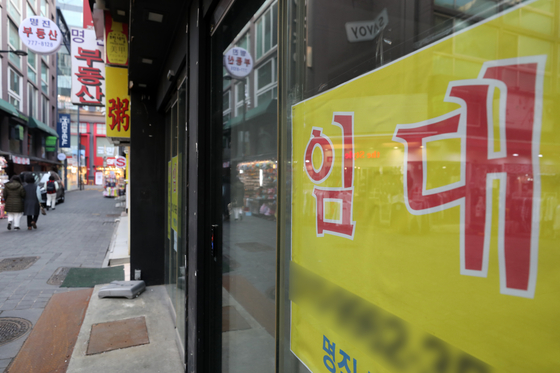
A rental notice is posted at a shopping district in Myeongdong Street, Jung-gu, Seoul. News 1
The standard market price of a store with a transaction price of 1.5 billion won on the first floor of a new complex in downtown A city in Gyeonggi-do (amount set by the government for local taxes on real estate) is 210 million won. It is the most expensive in this building due to the high accessibility of guests, but the standard market price is significantly lower. The market price of the basement floor of an old shopping mall building in the old downtown of B city, Gyeonggi-do is 260 million won, compared to the standard market price of 190 million won. There is little difference in the taxes paid by the owners of the two stores.
Controversy over high-priced real estate tax in large cities
This is the reason Gyeonggi Province proposed to the Ministry of Land, Infrastructure and Transport and the Ministry of Public Administration and Security, “Please promptly implement the price disclosure system for non-residents.” Gyeonggi Province commissioned the Korea Real Estate Research Institute in April-December last year to conduct a survey on the market price reflection rate of non-residential real estate. As a result, it was analyzed that the more expensive non-residential real estate in large cities, the lower the market price reflection rate.
The market price reflection rate of non-residential general real estate exceeding 50 billion won was 55.5%, and the market price reflection rate of non-residential collective real estate exceeding 5 billion won was 53.5%.
The business building on the 15th floor to the 7th floor below the ground in Bundang-gu, Seongnam-si, which was newly built in 2018, had a sale price of 366 billion won, but the tax base was 183.5 billion won, reflecting the market price of 50.1%. In the metropolitan cities of Seongnam Bundang (general 61.5%, group 51.2%) and Anyang (general 60.6%, group 50.8%), the market price reflection rate was rather lower than the average of all eight cities (general 66.0%, group 58.3%). In the case of non-residential collective real estate, even though the price of each floor is different, the price reflection rate of the first floor above the ground was 23.9%, and the basement floor showed a large deviation of 130.7%.
Jae-Myung Lee “It should be fair whether tax or distribution”

View of Gyeonggi Province. Gyeonggi-do
Gyeonggi Province explained that this difference is due to the fact that there is no published price for non-residential real estate. For non-residential real estate, taxes are imposed by each city or county in consideration of the property tax table based on the standard market price of buildings from the Ministry of the Interior and Safety. However, the current standard for building market price differs from the market price because it does not reflect actual values such as the utility of each floor and the level of rent.
Gyeonggi-do requested the Ministry of Public Administration and Security to improve the standard for calculating the standard market price in order to improve the imbalance in the current non-residential real estate building schedule. In addition, Gyeonggi-do plans to increase equity by adjusting the standard market price of buildings from time to time. Gyeonggi Governor Lee Jae-myung wrote on his social network service (SNS) that day, “Unfairness creates inequality and gaps, conflicts and frustrations,” and that “taxes, expenses, opportunities, and distributions must be fair.”
Rent may increase due to the application of the price disclosure system
However, some are concerned that Gyeonggi Province’s recommendation could lead to a rent increase. If the public price is applied to non-residential real estate and the tax increases, the rent can increase. The government revised the’Real Estate Price Disclosure Act’ in 2016 to announce published prices for non-residential real estate, but it is known that it is not being implemented due to such realistic problems.
Reporter Choi Moran [email protected]
